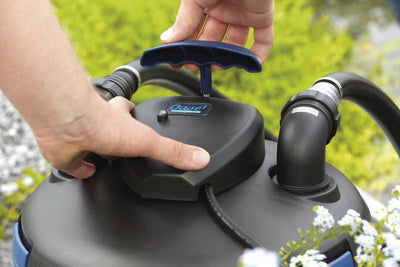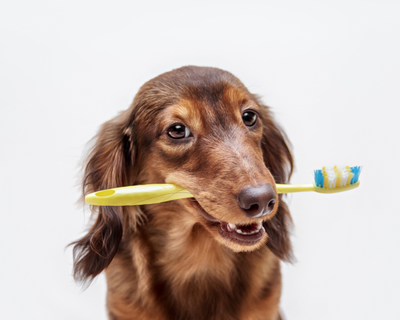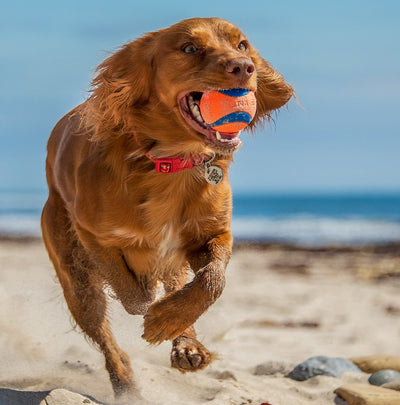 Are you a dog owner who is looking for a safe and effective way to introduce your furry friend to wearing a muzzle? Look no further! In this guide, we will provide you with valuable tips and techniques to ensure that your dog's experience with the Baskerville Muzzle is positive and stress-free. We understand that introducing a muzzle can be a daunting task, but with the right approach, you can help your dog feel comfortable and secure while wearing one. From gradual desensitisation exercises to positive reinforcement training, we will cover all the essential steps to make this transition as smooth as possible. Whether your dog needs to wear a muzzle for trips to the vet, training sessions, or any other reason, you can count on our expert advice to help you navigate this process with confidence. So, let's dive in and learn how to safely introduce your dog to the Baskerville Muzzle for a happier and healthier experience for both of you!
Are you a dog owner who is looking for a safe and effective way to introduce your furry friend to wearing a muzzle? Look no further! In this guide, we will provide you with valuable tips and techniques to ensure that your dog's experience with the Baskerville Muzzle is positive and stress-free. We understand that introducing a muzzle can be a daunting task, but with the right approach, you can help your dog feel comfortable and secure while wearing one. From gradual desensitisation exercises to positive reinforcement training, we will cover all the essential steps to make this transition as smooth as possible. Whether your dog needs to wear a muzzle for trips to the vet, training sessions, or any other reason, you can count on our expert advice to help you navigate this process with confidence. So, let's dive in and learn how to safely introduce your dog to the Baskerville Muzzle for a happier and healthier experience for both of you!
Understanding the Purpose of a Baskerville Muzzle
Before we dive into the process of introducing your dog to the Baskerville Muzzle, let's take a moment to understand why muzzles are sometimes necessary. Muzzles are commonly used to prevent dogs from biting or injuring themselves or others in certain situations. They can be particularly useful during visits to the vet, grooming sessions, or when introducing a dog to new environments or situations. The Baskerville Muzzle, in particular, is a popular choice among dog owners due to its design, which allows dogs to breathe, pant, and even drink water while wearing it.
Muzzle, let's take a moment to understand why muzzles are sometimes necessary. Muzzles are commonly used to prevent dogs from biting or injuring themselves or others in certain situations. They can be particularly useful during visits to the vet, grooming sessions, or when introducing a dog to new environments or situations. The Baskerville Muzzle, in particular, is a popular choice among dog owners due to its design, which allows dogs to breathe, pant, and even drink water while wearing it.
Step-by-Step Guide to Introducing Your Dog to the Baskerville Muzzle
 Now that we understand the purpose of a Baskerville Muzzle, let's discuss the step-by-step process of introducing your dog to wearing one. It's important to approach this process with patience and a positive mindset, as dogs can sense our emotions and reactions. Remember, the goal is to make your dog feel comfortable and secure while wearing the muzzle. Here's a breakdown of the process:
Now that we understand the purpose of a Baskerville Muzzle, let's discuss the step-by-step process of introducing your dog to wearing one. It's important to approach this process with patience and a positive mindset, as dogs can sense our emotions and reactions. Remember, the goal is to make your dog feel comfortable and secure while wearing the muzzle. Here's a breakdown of the process:
Introduction and Familiarisation. Start by introducing the muzzle to your dog in a calm and relaxed environment. Allow your dog to sniff and investigate the muzzle on their own terms. Use treats and praise to create a positive association with the muzzle.
Positive Reinforcement Training. Once your dog is comfortable with the presence of the muzzle, it's time to begin positive reinforcement training. Gradually associate the muzzle with positive experiences by rewarding your dog with treats and praise whenever they willingly approach or interact with the muzzle.
Touch and Treat. Begin gently touching your dog's snout with the muzzle while rewarding them with treats. Repeat this process several times, gradually increasing the duration of contact. The goal is to help your dog become accustomed to the sensation of the muzzle touching their snout.
Short Trial Periods. Once your dog is comfortable with the muzzle touching their snout, it's time to start putting the muzzle on for short trial periods. Begin by securing the muzzle loosely and gradually increase the duration of wear. Continue to reward your dog with treats and praise during and after each trial period.
period.
Securing the Muzzle Properly. As your dog becomes more comfortable with the muzzle, it's important to ensure that it is secured properly. Follow the manufacturer's instructions to adjust the straps and ensure a snug, but not tight, fit. Regularly check the fit of the muzzle to prevent discomfort or chafing.
Increasing Duration and Activities. Once your dog is comfortable wearing the muzzle for longer periods, gradually introduce activities such as walking, playing, or training sessions while wearing the muzzle. This will help your dog associate the muzzle with positive experiences and normal activities.
Remember, each dog is unique, and the time it takes to fully acclimate to the muzzle may vary. Be patient, and always prioritize your dog's comfort and well-being throughout the process.
Choosing the Right Size and Fit for Your Dog's Muzzle
One of the most important factors in ensuring a positive muzzle experience for your dog is choosing the right size and fit. Ill-fitting muzzles can cause discomfort, restrict breathing, or even injure your dog. When selecting a Baskerville Muzzle, take accurate measurements of your dog's snout length and circumference to choose the appropriate size. It's important to select a size that allows your dog to open their mouth, pant, and drink water comfortably. If you're unsure about the correct size.
Common Challenges and How to Overcome Them
While introducing your dog to the Baskerville Muzzle, you may encounter some common challenges. It's important to address these challenges promptly to ensure a positive experience for your dog. Here are a few common challenges and how to overcome them:
Resistance or Fear. Some dogs may initially resist wearing a muzzle or show signs of fear or anxiety. In such cases, it's important to take a step back and allow your dog to progress at their own pace. Use positive reinforcement techniques, such as treats and praise, to gradually build trust and confidence.
Discomfort or Chafing. If your dog shows signs of discomfort or develops chafing while wearing the muzzle, it may be an indication of an improper fit or a need for adjustment. Regularly check the fit of the muzzle and ensure that it is not causing any discomfort or irritation. Consider consulting with a professional if you are unsure about the fit or need assistance.
Negative Association: If your dog has had a negative experience with a muzzle in the past, they may have a preconceived negative association. In such cases, it's important to focus on positive reinforcement training and create new, positive associations with the Baskerville Muzzle. Patience and consistency are key in helping your dog overcome any negative associations.
Remember, every challenge can be overcome with patience, positive reinforcement, and a gradual approach. If you're experiencing difficulties, consider seeking guidance from a professional dog trainer or behaviorist who can provide personalised advice based on your dog's specific needs and temperament.
Gradual Desensitisation Exercises for Long-Term Comfort
Gradual desensitization is a crucial part of introducing your dog to the Baskerville Muzzle and ensuring long-term comfort. This technique involves exposing your dog to the muzzle in a controlled and gradual manner to help them become desensitised to its presence. Here are a few exercises you can try:
1. Muzzle Touch and Treat: Begin by gently touching the muzzle to your dog's snout for a brief moment, then immediately reward them with a treat. Repeat this exercise multiple times, gradually increasing the duration of contact. The goal is to help your dog associate the muzzle with positive experiences and rewards
2. Muzzle on, Treats off: Once your dog is comfortable with the muzzle touching their snout, begin putting the muzzle on for short periods without treats. This exercise reinforces the notion that wearing the muzzle is a positive experience in itself. Gradually increase the duration of wear while continuing to reward your dog with treats and praise after removing the muzzle.
3. Wearing the Muzzle During Meals: Another effective exercise is to feed your dog their meals while they are wearing the muzzle. This helps them associate the muzzle with a positive and rewarding experience. Start by placing a small amount of food in the muzzle, gradually increasing the amount over time. This exercise can be particularly useful for dogs who are food-motivated.
Remember to go at your dog's pace and never force them to engage in any exercises that cause distress or discomfort. Gradual desensitization should always be a positive and stress-free experience for your dog.
Building Trust and Confidence with the Dog Muzzle
Throughout the process of introducing your dog to the Baskerville Muzzle, it's crucial to focus on building trust and confidence. Your dog needs to feel safe and secure while wearing the muzzle, and this can only be achieved through a positive and patient approach. Here are a few tips to help you build trust and confidence:
Positive Reinforcement: Use treats, praise, and other rewards to create positive associations with the muzzle. Reward your dog for any voluntary interaction with the muzzle or for wearing it calmly.
Consistency: Be consistent in your training and desensitization exercises. Set aside regular time for training sessions and be patient with your dog's progress.
Body Language: Pay attention to your dog's body language and signals. If your dog shows signs of discomfort or stress, take a step back and reassess the training approach. Your dog's well-being always comes first.
Regular Breaks: During the initial stages of muzzle training, it's important to give your dog regular breaks. This allows them to relax and process the training sessions. Gradually increase the duration of wear over time.
By focusing on building trust and confidence, you can help your dog feel more comfortable and secure while wearing the Baskerville Muzzle.
Maintaining Safety and Using the Dog's Muzzle Responsibly
Once your dog is comfortable wearing the Baskerville Muzzle, it's important to maintain safety and use the muzzle responsibly. Here are a few guidelines to follow:
Supervision: Always supervise your dog while they are wearing the muzzle to ensure their safety. Never leave them unattended for extended periods.
Proper Fit: Regularly check the fit of the muzzle to ensure it is secure but not too tight. Adjust the straps as needed to prevent discomfort or chafing.
Ventilation and Water: The Baskerville Muzzle is designed to allow dogs to pant, breathe, and even drink water while wearing it. However, it's important to monitor your dog to ensure they are not experiencing any difficulties.
Training and Reinforcement: Continue to reinforce positive behaviors and associations with the muzzle. Regular training sessions and positive reinforcement will help your dog maintain a positive experience with the muzzle.
By using the Baskerville Muzzle responsibly and following these guidelines, you can ensure your dog's safety and well-being while wearing it.
Empowering Your Dog with a Positive Muzzle Experience
Introducing your dog to the Baskerville Muzzle may initially seem like a daunting task, but with the right approach, it can be a positive and stress-free experience for both you and your furry friend. Remember to approach the process with patience, positive reinforcement, and a gradual desensitization approach. Choose the right size and fit for your dog, address any challenges that arise, and focus on building trust and confidence. By doing so, you can empower your dog to feel comfortable and secure while wearing the Baskerville Muzzle, ensuring a happier and healthier experience for both of you.
© weknowpets 2023





